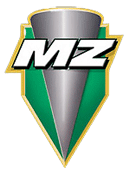Lately i've been investigating a clutch slippage problem. And maybe by happy coincidence I happened to realise my main seal behind the clutch was on backwards. Now I knew this was the case years ago, but I have actually rebuilt the engine twice and was sure I replaced or rectified the issue, but apparently not. Or maybe I put a new one/same one in backwards yet again? Who knows.
Anyway, I removed it with the standard screw in and pull out method (works very well!) as shown:

But as you can see, there is some sort of metal behind there. I initially decided to just clean it up but after many uhming and ahing and advice I decided to remove the metal plate that sits between the bearing and the seal. There is evidence of heat here. The original plastic caged bearing which the clutch rides on was burnt to the rear most washer and the washer indeed had signs of heat on it as it had turned blue. The seal itself also had burning marks on the inner side.
Heat on the seal and washer:

Clutch bearing:

The metal found behind seal:

Upon removing the metal plate I inspected the bearing and there is the lightest dusting of metal on the cage, but additionall (see video) I discovered that the inner race moves around the crank. When turning the crank the crank slips within the race so it's not completely lose but yes there is play there and you can spin the race around the crank.
I will have to dismantle the engine obviously. It's a possibility that bearing retaining compound might work- but i'm not sure. This is the original crank for the engine at 35k. Crank was re-built and engine re-built with new bearings at 26,000 miles (November 2017).
